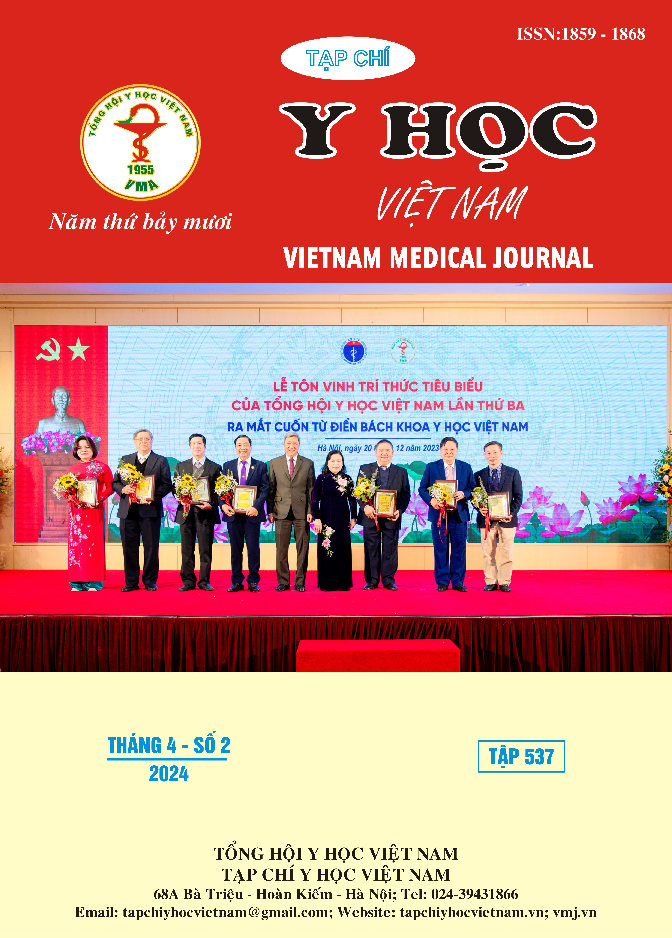PERSPECTIVES OF MODERN MEDICINE AND RADITIONAL MEDICINE IN THE TREATMENT OF POST-HERPETIC NEURALGIA
Main Article Content
Abstract
Background: Post-herpetic pain, or post-herpetic neuralgia, is a common neurological complication that can occur after a person has had shingles. It is a chronic pain condition that can last for months or even years and can have a significant impact on a patient's quality of life, ability to sleep, and ability to participate in daily activities. Pain after shingles is often easy to diagnose, but completely curing the pain is still an issue that needs attention. In recent years, researchers have focused on implementing many treatments with positive results to reduce pain, improve quality of life, and be safe for patients using modern medicine and traditional medicine. Objectives: An overview of modern medicine and traditional medicine perspectives in treating post-herpetic neuralgia will update several methods that have been researched to provide reliable and convincing evidence accepted by clinicians. Materials and methods: The review process involved searching and synthesizing studies related to post-herpetic neuralgia from PubMed and Google Scholar databases. Conclusion: Each method has evidence of therapeutic effectiveness, but with few reported side effects, invasive procedures require careful assessment of the risk-benefit ratio before use. Therefore, it is necessary to coordinate multimodality to achieve the desired results in treatment. The current evidence is insufficient to determine the best interventional treatment. Randomized controlled trials and systematic meta-analyses show that a combination of approaches is optimal for patients.
Article Details
Keywords
Shingles, post-herpetic neuralgia
References
2. Lin C.S, Lin Y.C, Lao H.C, and Chen C.C. Interventional Treatments for Postherpetic Neuralgia: A Systematic Review. Pain Physician. 2019.22(3), 209-228, doi: 10.1007/s00393-020-00915-y
3. Bộ Y tế. Hướng dẫn chẩn đoán và điều trị các bệnh da liễu. Nhà xuất bản Y học. 2018. 73-76. Tập 1.
4. Trịnh Thị Diệu Thường, Nguyễn Văn Đàn. Bệnh học và điều trị Thần kinh kết hợp Đông Tây y. Nhà xuất bản Y học chi nhánh TP HCM. 2021. 220-240
5. Saguil A, Kane S. Mercado M, and Lauters R. Herpes Zoster and Postherpetic Neuralgia: Prevention and Management. Am Fam Physician. 2017. 96(10), 656-663.
6. He Y, He J, Miao F, Fan Y, Zhang F, and et al. A bibliometric and visualization analysis of global research on postherpetic neuralgia from 2000 to 2022: A review. Medicine (Baltimore). 2023. 102(45), e34502. doi: 10.1097/MD.0000000000034502.
7. Tôn Chi Nhân, Lê Thị Mỹ Tiên, Giáo trình y học cổ truyền cơ sở. Nhà xuất bản Y học chi nhánh TP HCM. 2023
8. Avijgan M, Hajzargarbashi S.T, Kamran A, Avijgan M. Postherpetic Neuralgia: Practical Experiences Return to Traditional Chinese Medicine. J Acupunct Meridian Stud. 2017. 10(3), 157-164. doi: 10.1016/j.jams.2017.02.003.
9. Gao N, Li M, Wang W, Wang L, Liu Z, and et al. Top 100 Most-Cited Papers in Herpes Zoster from 2000 to 2022: A Bibliometric Study. J Pain Res. 2023. 16, 1779-1797. doi: 10.2147/JPR.S409616.
10. Liu Q, Wu X, Guo J, Gao J, Liu B, and et al. Analgesic Effect of Electroacupuncture on Postherpetic Neuralgia: A Trial Protocol for a Multicenter Randomized Controlled Trial. Pain Ther. 2021. 10(2), 1755-1771. doi: 10.1007/s40122-021-00283-8.


